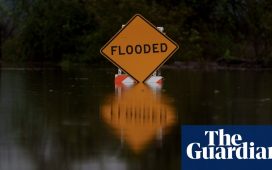Thunderstorms that the National Weather Service deems “destructive” will trigger an emergency alert on smartphones as part of the agency’s efforts to get people to protect themselves during severe weather, the agency said Thursday.
The Weather Service sends mobile alerts about hurricanes, tornadoes and other conditions, and, starting next month, it plans to add destructive thunderstorms to that list.
A “destructive” severe thunderstorm, according to the agency, is one that has baseball-size hail or winds of at least 80 miles per hour. These storms can rip shingles off a roof or send branches crashing onto homes, said Greg Schoor, a severe weather program manager at the National Weather Service in Oklahoma.
The agency’s local offices can triangulate all the cellphones in an area and send an alert when forecasters see that a dangerous storm is on the way. The alerts often come without much lead time.
Mr. Schoor said the agency chose to tag these storms as “destructive” because the word is frequently used in storm reports. The agency already has different tags to classify tornadoes and flash floods.
“We really want people to just be paying attention,” Mr. Schoor said in an interview on Thursday.
The agency hopes the “destructive” tag will make people realize that they should take measures to protect themselves. The mobile alerts will include Spanish translations and will advise people to take shelter or avoid certain areas.
The agency hasn’t sent alerts about severe thunderstorms in the past, but Mr. Schoor said it was important for people to know if “something really bad will happen,” whether that is rain, hail or lashing winds.
“We basically want you to do whatever you can to help out your own life safety in that moment,” he said.
Severe thunderstorms can result in a range of hazards, including tornadoes, floods and derechoes, which are lines of severe thunderstorms that can move rapidly across the landscape.
A powerful derecho ripped through the Midwest in August, bringing with it 100-m.p.h. winds and widespread power outages.
Thirteen of the 22 costliest weather disasters last year were severe storms, according to the National Oceanic and Atmospheric Administration. The other disasters include last year’s wildfires in the West and the heat wave that swept the western half of the country.
The Weather Service’s new alert category comes as the United States has seen an increase in the frequency of extreme rainstorms as the planet warms.
It is not possible to draw an immediate connection between one heavy downpour and climate change. Climate scientists may try to do that, by undertaking what is known as an attribution study, in the coming weeks or months.
But as warming continues, the United States and other parts of the world are likely to see an increase in storms as warming continues. One basic reason is that warmer air holds more moisture, resulting in heavier rainstorms.


